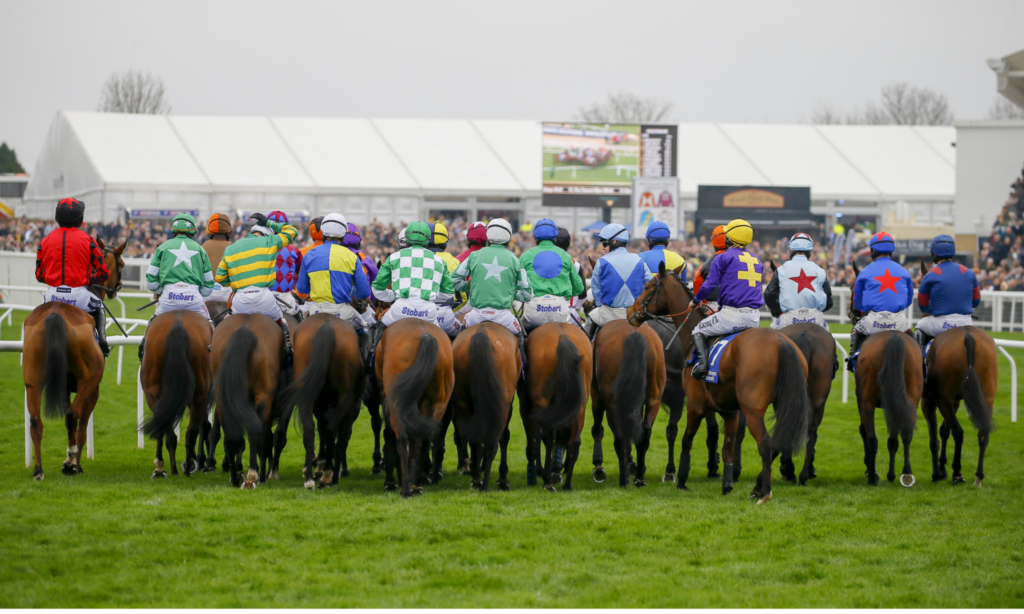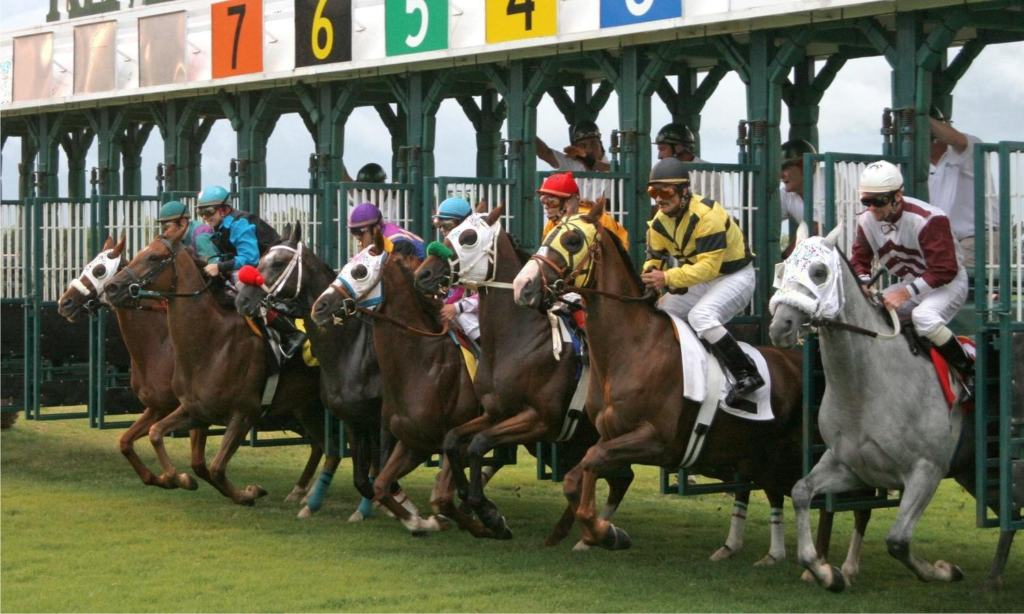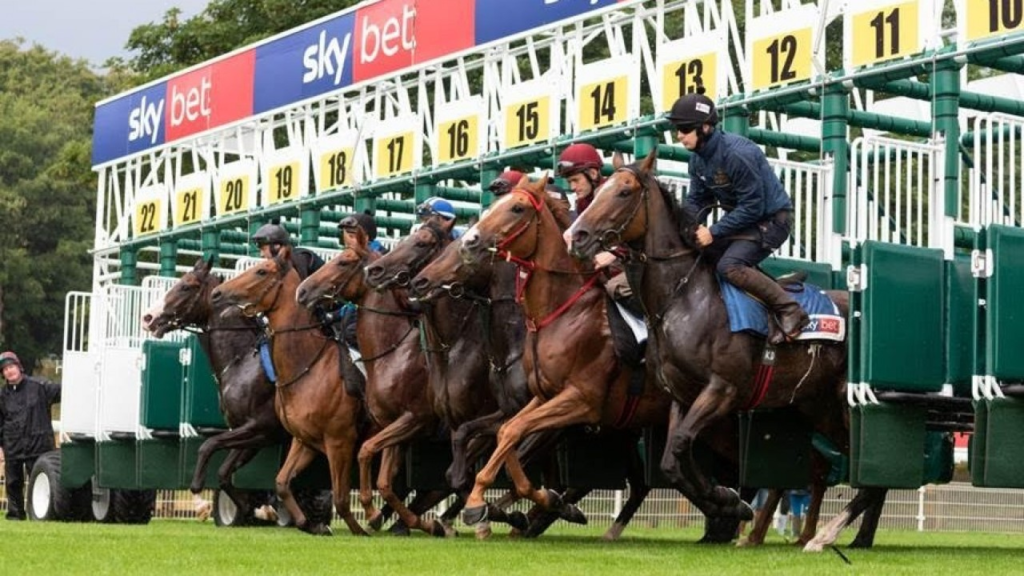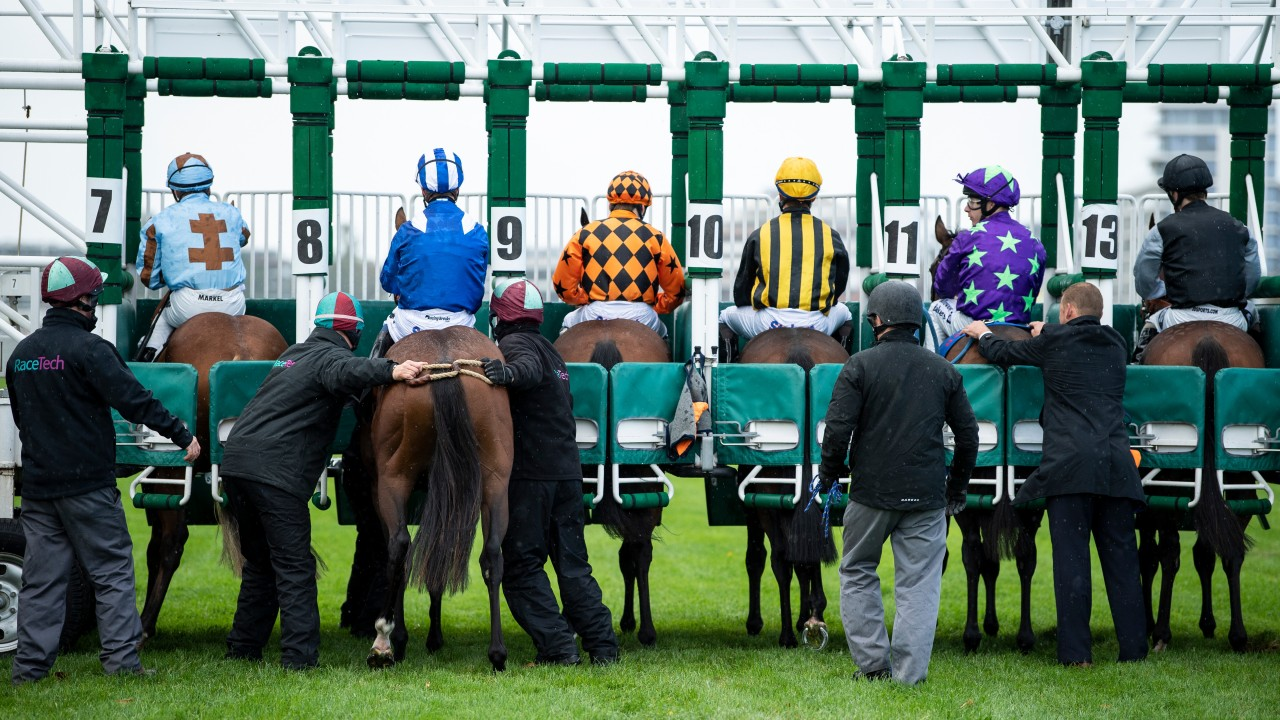For the purist, horse racing is an art form. Thoroughbreds thundering down the home stretch, stretching every sinew to try and win a race, the jockey extolling every last drop of energy from their respective mounts to try to reach the winning post in first position.
It does not matter to the horse, jockey, trainer, or the owner of the horse if the race meeting is a bread and butter midweek night meeting or a feature race-laden festival over two or three days on the flat, over the jumps, or a harness racing meeting, the effort that the horse and jockey exhibit will be of equal proportion
How do Horse Races Start? How a race starts would be dependant on what type of race you, as the punter, are watching. In a flat race, the horses would all start from a set of starting stalls which aligns all the horses and gives each of them a fair start where no one horse can gain an advantage.
In Jumps Racing, starting stalls are not required and horses start behind a tape, with a flag start, with the tape being released when the starter feels that all the horses in a race are ready to run. The length of the race compared to flat racing as well as the hurdles and obstacles ensured that a horse would not gain an advantage from the start.

Harness Racing takes place mostly in Australia and France and has a different start compared to Flat and Jumps Racing. Harness races begin quickly behind a moveable starting gate attached to a motor vehicle. As the horses approach the starting post, the car pulls away, the arms of the gates fold upon itself, and the race starts!
Flat Racing – The Most Popular type of Racing in the World
When the starter is satisfied that all horses are in position and ready to race, he clicks a button, disconnecting the electric current that runs through the bank of starting stalls, simultaneously opening the front stall doors. Simultaneously a loud bell sounds, signaling to the totalisator system that the race has started and no more bets should be taken.
On race days, starting stall handlers are appointed to each horse and enter the starting gate with them to ensure that the rider is secure, the horse’s feet are planted, and the horse’s head is straight when the gates open. Horses may also be covered, blindfolded, or led into the starting stalls with the front gates open. Once the gates open, it is the responsibility of each horses jockey to ensure that the horse’s head is straight when the stalls open.

Stalls for horse racing are intended to increase the competitive fairness of short races. Stalls are used in many Flat races across the globe, with the most popular horse racing centers being the United Kingdom, the United States of America, Australia, Hong Kong, and South Africa.
It would be unjust, just as in sprint sports, if runners preparing for a race were placed ahead of their opponents on the starting line. As a result, the stalls serve as a “starting block” for horses, who come out running as soon as the starter presses the button that opens the starting stalls.

This assures that all horses start running at the same moment and travel the same distance, resulting in superior punters being able to handicap races globally confident that all the rules and regulations of that specific country have been rigorously followed. In large events like the Melbourne Cup in Australia, certain races at the Royal Ascot Festival, stalls may be as wide as 25 horses, resulting in thrilling sprint finishes with the majority of runners in position to win.
National Hunt Racing – United Kingdom
You could believe that not utilizing stalls in Jumps Racing gives one horse an edge over another. After all, if a horse is fortunate enough to be leading the runners from the start of a National Hunt event, isn’t he or she more likely to win?
Stalls are not used in National Hunt races for a variety of reasons. The main one is that there are enough obstacles and hurdles in National Hunt races to guarantee that any little advantage from starting at the head of the group is swiftly negated. National Hunt events, unlike Flat races, are more like marathons than sprints, thus the two or three lengths a horse may gain when starting on the tape or in a group diminishes.

Another difficulty is that horses competing in National Hunt races are all trained to leap over fences or jumps. Before a race, jockeys will typically trot their horse up to a fence so that the animal may judge the height and grow acquainted with its surroundings. As a result, the last thing the horse needs is to be distracted further by being put in a starting stall before the race starts.
Harness Racing – Australia and France
Harness racing is quite popular in Australia and France. Harness racing is a kind of horse racing in which the horses’ race at a certain gait (a trot or a pace). They normally pull a two-wheeled carriage called a sulky, or spider, which is driven by a driver, who is analogous to a jockey in flat and jump racing.

The majority of harness races begin behind a motorized starting gate, often known as a movable barrier. Pacing or trotting begins, and the horses form a line behind a hinged gate placed on a moving motor vehicle, which takes them to the starting line. Every day, harness races are held in Australia and France and it has garnered a big following especially in these countries with millions being bet on these races every week.
Horse Racing – The Three Disciplines
People across the globe love horse racing. Whether the punter favours Flat Racing, Jump Racing, or Harness Racing, Millions of Pounds are bet daily on Horse Races which are run daily on multiple racecourses across the globe.
However, no matter which forms of Racing you follow, all of them require a starter to ensure that every horse has a fair opportunity to win its race. Whether it’s Starting Stalls on the Flat, a flag (tape being released) start for Jumps Racing, or a motorised Gate for Harness Racing, punters all love studying the Racecard, finding a possible winner of the race, placing a bet, and collecting their winnings when that horse wins.

